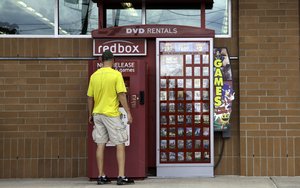
Despite the ever-increasing consumption of content through digital means, consumers are still attached to their video discs.
According to
GfK’s Home Technology Monitor, consumers who once owned (or still own) physical copies of films and television shows are less likely to add intangible digital versions to their
collections.
“Consumers are having problems figuring out the download procedures or remembering passwords or services,” says David Tice, senior vice president of
media and entertainment at GfK. “It’s not as simple as just putting in a disc and playing it.”
According to the study (which is based on a survey of more than
1,000 consumers), only 46% of consumers say they have ever purchased or rented a digital-only copy of a TV program or movie, compared with 86% who have bought or rented DVDs or Blur-Ray discs (and 78%
who have bought or rented VHS tapes).
Additionally, while 37% of consumers said they had bought a DVD or Blu-Ray that also contained a digital version of the content,
two-thirds of them never accessed that version, saying they either couldn’t see the need or simply weren’t interested. “Few people are taking advantage of that,” Tice tells
Marketing Daily. “They don’t see a use for it.”
Though many of these consumers have shown a propensity to own video content in the past, consumers seem to
believe they have access to enough content through streaming and subscription models, and owning the content has become less of a priority, Tice says.
“Content creators
and distributors need to do a better job of translating viewers’ passions and curiosity into digital transactions at the title level – which brings a lot more direct revenue to the
companies involved,” he says. Accordingly, these content creators and distributors may need to embark on further efforts to educate consumers about the ease and simplicity of owning digital
content, which is something the subscription streaming services have mastered.
“People who have subscriptions to the streaming services feel they can get enough
[content] to keep them occupied. And, again, there’s that ease of use,” Tice says. “Half the battle may be to communicate to people that [digital download procedures] are not that
much worse than logging in to other services.”